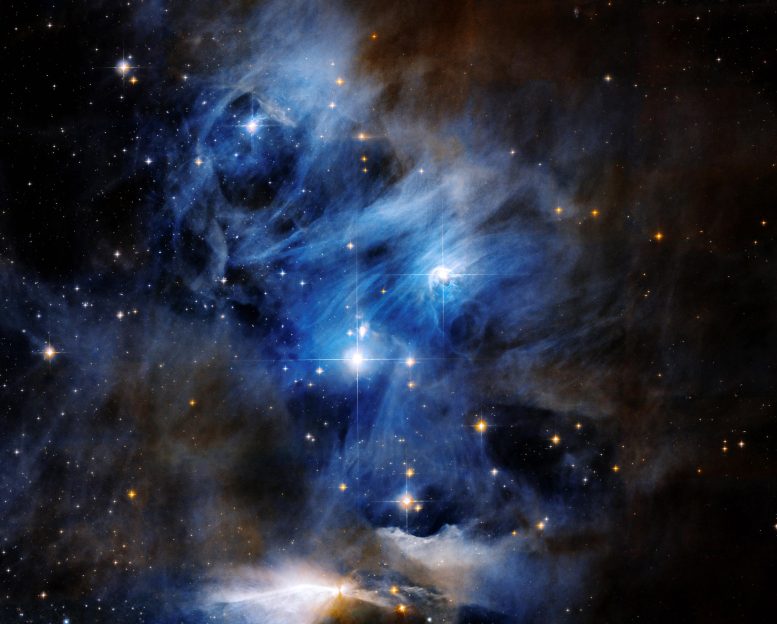Anarchists are Building DIY Heaters to Keep Unhoused People Warm
Open-source blueprints are inspiring activists to distribute tent-safe heaters that can be built for as little as $7.
By Ella FasslerVICE
31.1.22
PHOTO BY THE JAVS CAT
As temperatures fall sharply and the number of unhoused people swells throughout the United States, anarchists are forming a decentralized network that builds and distributes tent-safe, alcohol-based heaters to those without shelter.
“The project wasn’t something new, it was developed over the years, in many different forms,” wrote members of HeaterBloc, a Portland-based collective that released the open-source guide for building heaters, in a message to Motherboard. “It starts off with an idea, then that idea is built upon. It evolves, it spreads, it takes on a life of its own. This year, we were just fortunate enough to settle on a safe and cost efficient design.”
The units cost about seven dollars each when components are purchased in bulk, and they can be used for both cooking and warming small indoor spaces for hours at a time. If the heater tips over, the flame automatically burns out and, with proper ventilation, the risk of carbon monoxide poisoning is minimal because isopropyl alcohol combusts cleanly.
The instructional guide has been translated into several languages, and groups that build and distribute the DIY heaters have popped up in rural areas and major cities across the US, including in Pittsburg, Philadelphia, New York City, San Diego, Atlanta, Tacoma, Kansas City, Dallas, Kalamazoo, Elm Fork, Texas, and Spokane, Washington. Some groups are beginning to explore adapting the design for use in refugee camps, in areas that have experienced severe power outages such as Texas, and for the increasing number of people in the US who cannot afford utilities.
A DIY TENT HEATER BUILT BY THE PORTLAND-BASED COLLECTIVE HEATERBLOC
In accordance with anarchist principles, the network is operating non-hierarchically and cooperatively. “Seeing the community that’s sprung up around this need and seeing people take real action to help houseless communities stay warm all over the country is incredible because this is literally saving people’s lives,” wrote the collective. “That’s all that really matters.”
From 2000 to 2019, nearly 5 million people died from cold conditions globally. In the US, anywhere from 580,000 to 1.5 million people were unhoused prior to the pandemic, and a lack of financial support during the crisis has exacerbated the problem. In many places, local governments and law enforcement have responded by destroying tent communities with bulldozers and attempting to force people into shelters that are oftentimes crowded and unsafe—if shelter is offered at all.
“It's hard to convey to the average person what it feels like to be unhoused in the winter,” wrote the HeaterBloc members in their statement. “An inescapable coldness that fills your lungs with ice and numbs your limbs. A damp cold that exhausts your body, one that you’d do anything to escape.”
Meadows*, a formerly unhoused member of a Seattle-based mutual aid group that is building the heaters, told Motherboard that the project is reducing harm on a variety of levels. Unhoused people are often forced to burn trash in their tents to stay warm, which puts them at risk of carbon monoxide poisoning and brain damage. Heaters also preserve people’s autonomy and safety by allowing them to reject co-sleeping for survival and they reduce drug use.
“There's a really high percentage of unhoused people that don't use drugs, and the reason why they became unhoused has nothing to do with drug use,” said Meadows, who asked to be identified with a pseudonym because mutual aid groups are often targeted by police and right-wing agitators. “However, drugs make you feel warmer, they also kind of help you pass the time, and they make the fight or flight situation more bearable. When mutual aid groups are actually able to get more heaters to people, we've actually already seen a reduction in drug use and an uptick in smiles.”
Meadows said she has watched people become more alert upon receiving heaters. “Every week during the wintertime, they're already borderline hypothermic,” she said. “Then we come back to refill their heaters, they're totally different. They're active and present. And, they're just like, ‘wow, these heaters are amazing.’”
But, at the end of the day, all people deserve actual heated housing, mutual aid groups said. The project supplements tenant organizing, eviction defense and take-overs of empty buildings, all of which are intended to ensure everyone has roofs over their heads.
“When you're poor you don't have a voice. When you're unhoused you are not treated as a human. Our desire would be that HeaterBloc would no longer be a need,” wrote HeaterBloc. “Society would accept and care for all of its members, acknowledging that housing is a human right rather than just a luxury.”
By Ella Fassler
31.1.22
As temperatures fall sharply and the number of unhoused people swells throughout the United States, anarchists are forming a decentralized network that builds and distributes tent-safe, alcohol-based heaters to those without shelter.
“The project wasn’t something new, it was developed over the years, in many different forms,” wrote members of HeaterBloc, a Portland-based collective that released the open-source guide for building heaters, in a message to Motherboard. “It starts off with an idea, then that idea is built upon. It evolves, it spreads, it takes on a life of its own. This year, we were just fortunate enough to settle on a safe and cost efficient design.”
The units cost about seven dollars each when components are purchased in bulk, and they can be used for both cooking and warming small indoor spaces for hours at a time. If the heater tips over, the flame automatically burns out and, with proper ventilation, the risk of carbon monoxide poisoning is minimal because isopropyl alcohol combusts cleanly.
The instructional guide has been translated into several languages, and groups that build and distribute the DIY heaters have popped up in rural areas and major cities across the US, including in Pittsburg, Philadelphia, New York City, San Diego, Atlanta, Tacoma, Kansas City, Dallas, Kalamazoo, Elm Fork, Texas, and Spokane, Washington. Some groups are beginning to explore adapting the design for use in refugee camps, in areas that have experienced severe power outages such as Texas, and for the increasing number of people in the US who cannot afford utilities.
A DIY TENT HEATER BUILT BY THE PORTLAND-BASED COLLECTIVE HEATERBLOC
In accordance with anarchist principles, the network is operating non-hierarchically and cooperatively. “Seeing the community that’s sprung up around this need and seeing people take real action to help houseless communities stay warm all over the country is incredible because this is literally saving people’s lives,” wrote the collective. “That’s all that really matters.”
From 2000 to 2019, nearly 5 million people died from cold conditions globally. In the US, anywhere from 580,000 to 1.5 million people were unhoused prior to the pandemic, and a lack of financial support during the crisis has exacerbated the problem. In many places, local governments and law enforcement have responded by destroying tent communities with bulldozers and attempting to force people into shelters that are oftentimes crowded and unsafe—if shelter is offered at all.
“It's hard to convey to the average person what it feels like to be unhoused in the winter,” wrote the HeaterBloc members in their statement. “An inescapable coldness that fills your lungs with ice and numbs your limbs. A damp cold that exhausts your body, one that you’d do anything to escape.”
Meadows*, a formerly unhoused member of a Seattle-based mutual aid group that is building the heaters, told Motherboard that the project is reducing harm on a variety of levels. Unhoused people are often forced to burn trash in their tents to stay warm, which puts them at risk of carbon monoxide poisoning and brain damage. Heaters also preserve people’s autonomy and safety by allowing them to reject co-sleeping for survival and they reduce drug use.
“There's a really high percentage of unhoused people that don't use drugs, and the reason why they became unhoused has nothing to do with drug use,” said Meadows, who asked to be identified with a pseudonym because mutual aid groups are often targeted by police and right-wing agitators. “However, drugs make you feel warmer, they also kind of help you pass the time, and they make the fight or flight situation more bearable. When mutual aid groups are actually able to get more heaters to people, we've actually already seen a reduction in drug use and an uptick in smiles.”
Meadows said she has watched people become more alert upon receiving heaters. “Every week during the wintertime, they're already borderline hypothermic,” she said. “Then we come back to refill their heaters, they're totally different. They're active and present. And, they're just like, ‘wow, these heaters are amazing.’”
But, at the end of the day, all people deserve actual heated housing, mutual aid groups said. The project supplements tenant organizing, eviction defense and take-overs of empty buildings, all of which are intended to ensure everyone has roofs over their heads.
“When you're poor you don't have a voice. When you're unhoused you are not treated as a human. Our desire would be that HeaterBloc would no longer be a need,” wrote HeaterBloc. “Society would accept and care for all of its members, acknowledging that housing is a human right rather than just a luxury.”
A DIY Heater Could Keep Homeless People Warm in Winter. For 7 Dollars?
The alcohol-based heaters are tent-safe.

Winter has come, and the Northern Hemisphere is now covered in a blanket of snow. However, things are not looking great for over half a million people living in a state of homelessness in the United States in the freezing cold.
To provide a heating solution to those that are left without a home, Heater Bloc, a Portland-based community, just shared open-sourced blueprints to building heater models. The decentralized network operates in accordance with anarchist principles, non-hierarchically, and cooperatively. They build and distribute tent-safe, alcohol-based heaters to those without shelter during the winter.
Headlined "Heater Bloc’s Guide to Building a Tent-Safe Copper Coil Alcohol Heater", the guide gives detailed instructions and the equipment needed for the build. What's great about the unit is that it costs only about seven dollars each when all components are purchased beforehand and it can be used in small indoor spaces for hours.
Building low-cost copper coil alcohol heaters
How do they work? The heater's burner uses nothing but fumes from the alcohol fuel. The alcohol fumes or vapors that stem from the liquid fuel in the jar, collect in the copper pipe. When the pipe is heated, the fumes expand and are forced out a tiny
hole at the bottom of the copper loop (the fume or jet hole). These fumes then combust as soon as they exit and hit the open flame which then heats the top of the copper loop. The alcohol fumes will keep burning until the flow is interrupted by tipping it sideways or blowing the flame out like a candle.
The ingenious heaters can be used for both cooking and heating and if it tips over, its flame automatically burns out. As long as there's proper ventilation, the risk of carbon monoxide poisoning is minimal as well due to isopropyl alcohol's clean combustion.
Speaking to Vice, members of HeaterBloc said that "The project wasn’t something new, it was developed over the years, in many different forms." and that "It starts off with an idea, then that idea is built upon. It evolves, it spreads, it takes on a life of its own. This year, we were just fortunate enough to settle on a safe and cost-efficient design."
“It's hard to convey to the average person what it feels like to be unhoused in the winter,” wrote the HeaterBloc members in their statement. “An inescapable coldness that fills your lungs with ice and numbs your limbs. A damp cold that exhausts your body, one that you’d do anything to escape.”
A mutual aid group activist under the name Meadows told Vice that “There's a really high percentage of unhoused people that don't use drugs, and the reason why they became unhoused has nothing to do with drug use,” and added, “however, drugs make you feel warmer, they also kind of help you pass the time, and they make the fight or flight situation more bearable. When mutual aid groups are actually able to get more heaters to people, we've actually already seen a reduction in drug use and an uptick in smiles.”
While they're not able to provide roofs over everyone's heads, the aid groups are currently building and distributing heaters to homeless people around the country.
“When you're poor you don't have a voice. When you're unhoused you are not treated as a human. Our desire would be that HeaterBloc would no longer be a need,” wrote HeaterBloc. “Society would accept and care for all of its members, acknowledging that housing is a human right rather than just a luxury.”












 Pedalos on the banks of the Marmara Sea covered with sea snot. As the climate crisis heats the seas, plankton are on the move, with potentially profound consequences for ocean life and humans. Photograph: Yasin Akgül/AFP/Getty
Pedalos on the banks of the Marmara Sea covered with sea snot. As the climate crisis heats the seas, plankton are on the move, with potentially profound consequences for ocean life and humans. Photograph: Yasin Akgül/AFP/Getty

